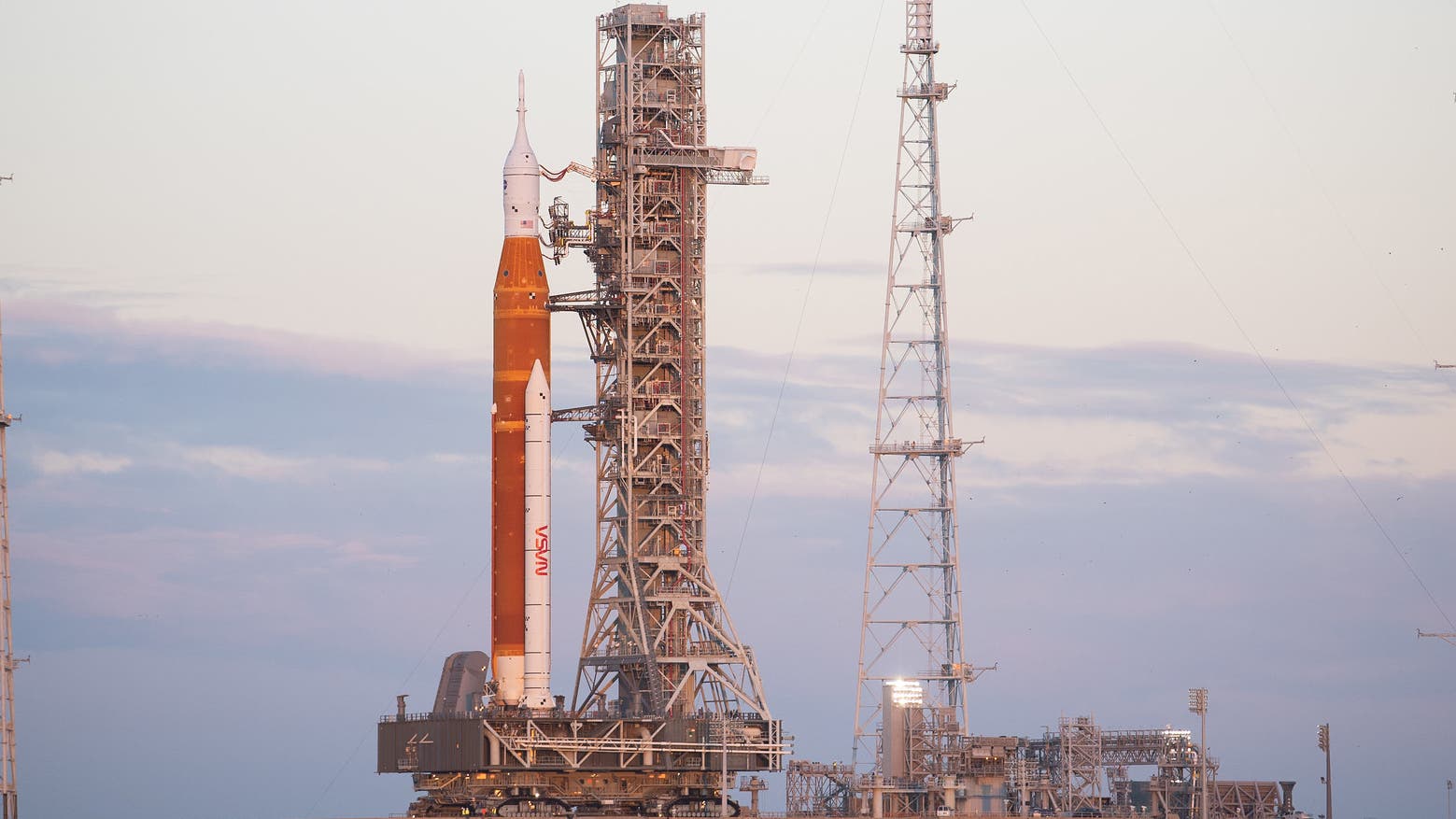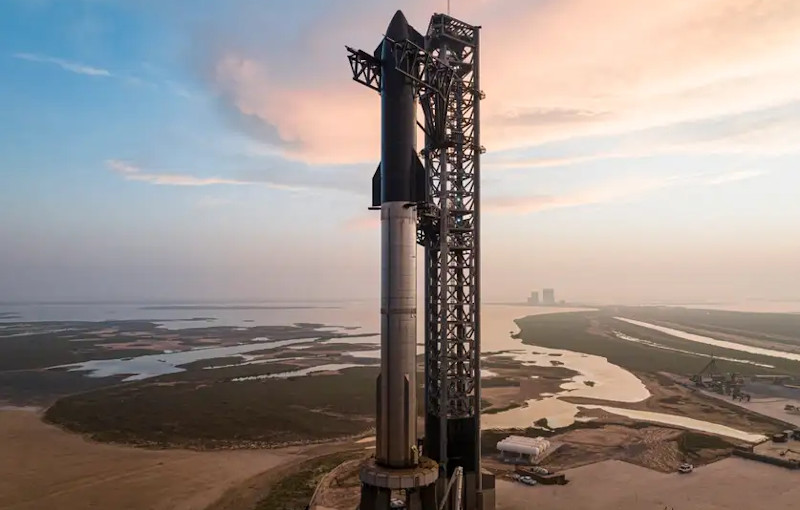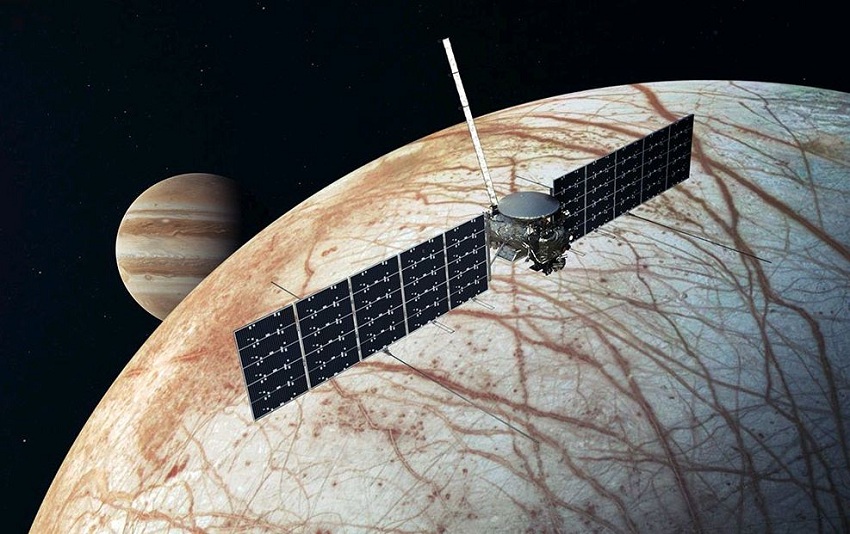Donald Trump rekrutiert für seine zweite Amtszeit als US-Präsident eifrig Männer, die ambitionierte Pläne im All verfolgen. Welche Veränderungen wird das mit sich bringen?#Artemis #SLS #SpaceLaunchSystem #Artemis-Programm #BemannteRaumfahrt #NASA #Astronauten #Trägerraketen #SpaceX #BlueOrigin #Privatastronaut #JaredIsaacman #Astronomie
Ein Zukunftstrio für die Raumfahrt?
#sls
НАСА откладывает миссии Артемида на Луну
В четверг НАСА объявило о последних обновлениях своих планов по исследованию Луны. Представители НАСА заявили, что запланированное возвращение на Луну переносится с 2026 года на «середину 2027 года» из-за проблем с теплозащитой и других проблем, с которыми может столкнуться экипаж космического корабля Orion. Миссия Артемида, названная в честь сестры Аполлона в греческой мифологии, была официально …
Сообщение НАСА откладывает миссии Артемида на Луну появились сначала на AB-NEWS.
#астрономияикосмос #космонавтика #artemis #orion #sls #spacex #starship #исследованиелуны #наса #lang_ru #ru #abnewsru #abnews #наукаитехника
3 Likes
НАСА выбрало места посадки миссии Artemis III на Луне
В то время как НАСА готовится к первой за более чем пять десятилетий высадке экипажа на Луну, агентство определило обновленный набор из девяти потенциальных регионов посадки вблизи Южного полюса Луны для своей миссии Artemis III. Эти области будут дополнительно изучены с помощью научных и инженерных исследований. Кроме того, НАСА продолжит исследовать потенциальные области для миссий …
Сообщение НАСА выбрало места посадки миссии Artemis III на Луне появились сначала на AB-NEWS.
#астрономияикосмос #космонавтика #artemis #orion #sls #starship #исследованиелуны #луна #марс #наса #lang_ru #ru #abnewsru #abnews #наукаитехника
Компания Axiom Space представила окончательный вариант лунного скафандра
Когда миссия Artemis III (Артемида) приземлится на Луне (примерно через два года), астронавты, которые спустятся с корабля Starship HLS, станут первыми людьми, которые ступят на поверхность Луны за несколько десятилетий. И теперь стало известно, во что они будут одеты, когда сделают это. Компания Axiom Space провела последние два года, работая над новым скафандром, известным как …
Сообщение Компания Axiom Space представила окончательный вариант лунного скафандра появились сначала на AB-NEWS.
#космонавтика #астрономияикосмос #artemis #sls #исследованиелуны #lang_ru #ru #abnewsru #abnews #наукаитехника
"SLS is still a national disgrace".
The blog post starts with, "Four years ago, unable to find a comprehensive summary of the ongoing abject failure known as the NASA SLS (Space Launch System), I wrote one. If you're unfamiliar with the topic, you should read it first."
Uh, no, don't do that... unless you have a lot of time. This follow-up even still takes a lot of time. If you have a lot of time and are in the mood to feel depressed over NASA mission failures, you've come to the right place.
SLS stands for "Space Launch System", and it's an "ongoing abject failure", according to Casey Handmer.
"By continuing to humor this monstrosity, NASA has squandered its technical integrity and credibility."
"NASA has spent $20b on SLS and related programs in the last four years, so let's tick off updates since my previous blog on this topic. $20b should buy a lot of progress, but if anything, this program is even further from any semblance of functionality than it was back then."
Besides the commentary on the SLS failures, what struck me was the "Litany of other canceled and delayed projects":
"Mars Perseverance, a supposedly cheaper built-to-print replica of the Curiosity Mars rover from 2012 then required extensive re-engineering costing $2.4b, the same as the previous rover."
"Mars Sample Return's budget grew from $1.6b to $11b while the schedule slipped multiple years to the right."
"VERITAS (mission to Venus) indefinitely postponed due to budget constraints."
"HWO/HabEx/Luvoir and the new (bi)decadal survey. JWST, originally budgeted in 1999 for $1b to launch in 2007, ultimately launched in 2021 after spending $10b, so horrendously late and over budget that instead of re-imposing any kind of programmatic discipline or inventing a contract structure that doesn't reward Northrop Grumman for wasting money, NASA instead has decided to delay the next big space telescope (currently termed the Habitable Worlds Observatory) into the 2050s."
"Dragonfly -- a super cool nuclear powered robotic octocopter to explore Titan, was originally budgeted at $850m and is now pushing well beyond flagship status at $3.35b."
"VIPER -- a robotic moon rover at the south pole. Originally conceived as the Resource Prospector rover from NASA Ames, then canceled in 2018 after spending $100m on development, the concept returned as VIPER. Its budget grew from $250m to $450m and most recently to $685m, exceeding a critical cost cap leading to cancellation despite being a supposedly essential part of Project Artemis."
"Psyche -- a mission to a metal asteroid. It missed its launch window due to a software issue discovered during final check out, growing its budget from $1b to $1.2b and pushing VERITAS into limbo."
"NEO Surveyor. In 1998 Congress mandated that NASA map 90% of near Earth objects larger than 1 km -- asteroids capable of destroying our entire civilization. Now, 30 years later, the mission has been pushed back another two years despite an increased budget, now expected to top $1.2b."
"Europa Clipper. Budget grew from $2b in 2013 to $5.2b."
"Ingenuity -- developed for less than $25m, because JPL was spending its own money."
"CASIS -- ISS National Lab. In an effort to defray costs and prolong the life of the station, NASA spent years building CASIS (an independent non-profit) and the ISS National Lab to find private customers."
"Chandra X-ray observatory, already launched and operating in space, is being defunded with 10 years of operational life remaining, because of budgetary pressures."
"Block 1B and the Exploration Upper Stage. Yet another configuration of SLS with a beefier upper stage, but only a marginal increase of launch capacity."
"Artemis space suit provider Collins backs out."
"Artemis space suit provider Axiom Space in trouble."
"I haven't forgotten Gateway and Starliner, they get a full treatment below."
Gateway, also known as Lunar Gateway, is a space station assembled in orbit around the Moon.
"The entire damn lunar gateway only exists because SLS is too anaemic to launch the incredibly overweight Orion anywhere useful, so perhaps we should just drop the whole thing into the Atlantic ocean and be done with it."
"In September 2014, NASA awarded Boeing $4.2b and SpaceX (somewhat grudgingly) $2.6b to develop capsules to transport people to and from the ISS."
"SpaceX's Crew Dragon capsule first flew in 2019 and in 2020 brought astronauts to and from the space station. As of September 2024, it's flown thirteen flights (three private) to the ISS, two other private flights including the highest ever Earth orbit and first private space walk, and carried 54 people in space."
"In contrast, Boeing's Starliner only flew two astronauts to the ISS, after two previous launches with a series of failures and near misses. Despite being a much simpler design than Crew Dragon, Starliner has suffered from:"
[list of stuff]
"Conway's Law explains that product structure mirrors the organizational structure that built it. ..."
Commentary: I have been wondering if there's something in the nature of human bureaucracies that causes them to gradually become moribund over time. It seems like this inflicts not just NASA, not even just the US government, but our society at large. It seems like, infrastructure-wise, things get done more and more slowly and at higher and higher cost, with no discernible explanation. At least in the tech industry there are nimble startups, but they seem to be outliers to the way our society is increasingly operating, and even they have a tendency to get acquired by established incumbents, for whom people have observed "enshittification" is a thing that happens enough to coin a word for it.
4 Likes
Миссия Europa Clipper готовится к запуску
В течение десяти лет команда миссии НАСА «Европа Клиппер» (Europa Clipper) работала над тем, чтобы наступить тот день, когда они смогут, наконец, отправить космический аппарат к одному из ледяных спутников Юпитера. Теперь этот день уже не за горами. После многочисленных бюрократических препятствий и трудностей с оборудованием, одна из самых амбициозных миссий НАСА получила 21-дневное стартовое …
Сообщение Миссия Europa Clipper готовится к запуску появились сначала на AB-NEWS.
#космонавтика #астрономияикосмос #europaclipper #sls #наса #юпитер #lang_ru #ru #abnewsru #abnews #наукаитехника
One person like that
НАСА тестирует систему стыковки на лунном корабле SpaceX

НАСА потратило годы на работу над ракетой-носителем SLS (Space Launch System) и космическим кораблем «Орион», которые должны доставить людей на Луну в ближайшие годы, но для того, чтобы сделать «один маленький шаг», потребуется не один космический корабль. SpaceX строит первый посадочный модуль для миссий «Артемиды» (Artemis) как специальный вариант ракеты Starship. Среди модификаций для этой […]
Сообщение НАСА тестирует систему стыковки на лунном корабле SpaceX появились сначала на AB-NEWS.
#космонавтика #artemis #blueorigin #orion #sls #spacex #исследованиелуны #луна #наса #lang_ru #ru #abnewsru #abnews #наукаитехника
One person like that
Астронавты испытали лифт Starship для высадки на Луну
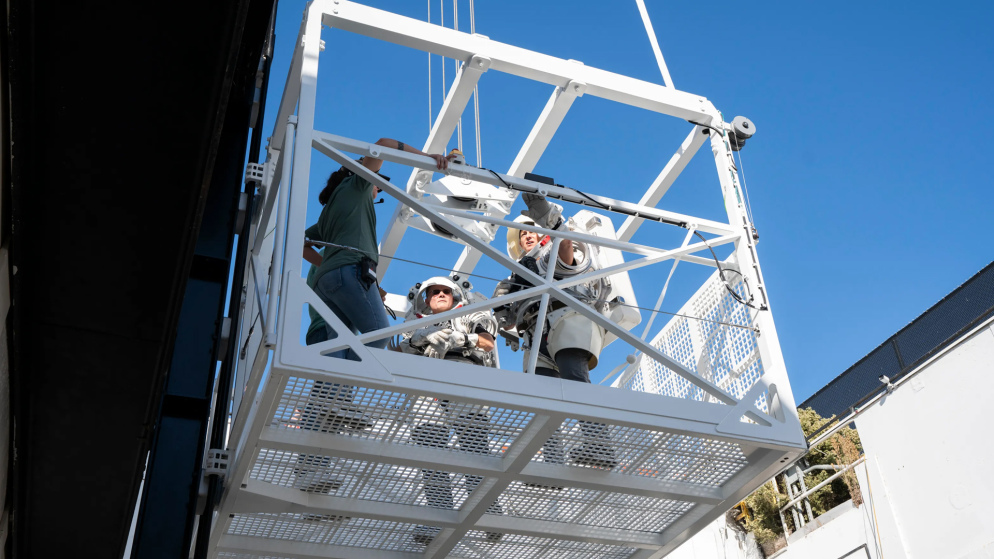
НАСА планирует возвращение на Луну, и SpaceX является ключевой частью этого плана. Компания Илона Маска работает над специальной версией своей будущей ракеты Starship — Human Landing System (HLS). Первая посадка в рамках миссии «Артемида-3» с экипажем (Artemis III) все еще запланирована на конец 2025 года (хотя более реально выглядит 2027), и предстоит еще много работы. […]
Сообщение Астронавты испытали лифт Starship для высадки на Луну появились сначала на AB-NEWS.
#космонавтика #artemis #blueorigin #orion #sls #spacex #луна #наса #lang_ru #ru #abnewsru #abnews #наукаитехника
One person like that
One person like that
НАСА назвало состав экипажа для миссии по облету Луны

Космическое агентство НАСА представило экипаж для своей первой миссии человека к Луне за более чем 50 лет. Кристина Кох, астронавт НАСА, которая является рекордсменом по самому продолжительному одиночному космическому полету женщины, будет специалистом миссии в полете Artemis II вокруг Луны в следующем году. Виктор Гловер из НАСА, военно-морской летчик, будет пилотировать космический корабль «Орион», который […]
Сообщение НАСА назвало состав экипажа для миссии по облету Луны появились сначала на AB-NEWS - Новости науки и техники.
#космонавтика #artemis #orion #sls #луна #марс #мкс #наса #lang_ru #ru #abnewsru #abnews #наукаитехника
SpaceX Starship успешно завершил испытание двигателей на стартовой площадке

SpaceX сделала большой шаг вперед к запуску своего гигантского космического корабля Starship на орбиту, завершив испытание двигателей на стартовой площадке в четверг. При испытании тридцать один из 33 разгонных двигателей первой ступени успешно включились одновременно. Команда инженеров выключила один двигатель, прежде чем отправить команду на запуск, а другой двигатель позже выключился сам -- «но двигателей […]
Сообщение SpaceX Starship успешно завершил испытание двигателей на стартовой площадке появились сначала на AB-NEWS - Новости науки и техники.
#космонавтика #orion #sls #spacex #марс #наса #lang_ru #ru #abnewsru #abnews #наукаитехника
НАСА заявило, что люди могли бы жить и работать на Луне к 2030 году
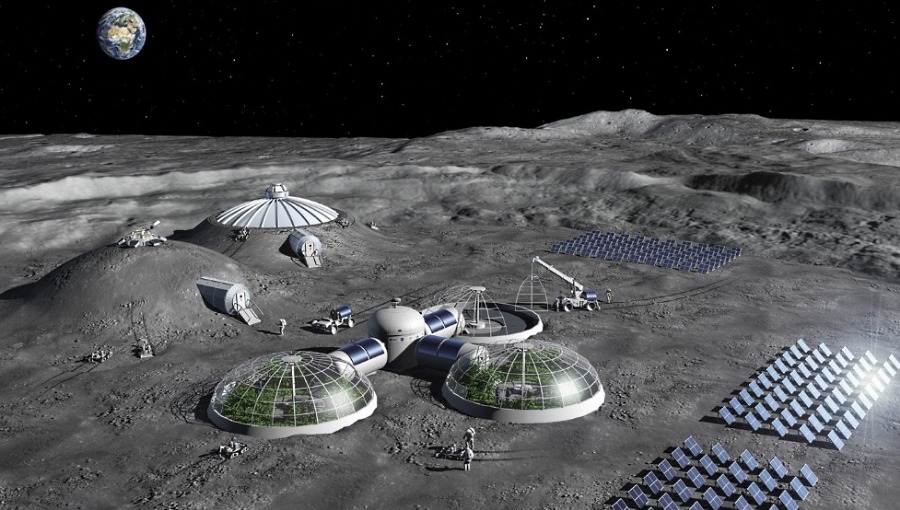
Люди находятся на пути к тому, чтобы жить и работать на Луне к 2030 году, заявил представитель НАСА. «Мы собираемся отправлять людей на поверхность Луны, и они будут жить на этой поверхности и заниматься наукой», — сказал Ховард Ху, руководитель программы лунных космических кораблей «Орион». На прошлой неделе НАСА успешно запустило свою новую сверхмощную ракету […]
Сообщение НАСА заявило, что люди могли бы жить и работать на Луне к 2030 году появились сначала на AB-NEWS - Новости науки и техники.
#астрономия #космонавтика #orion #sls #луна #марс #наса #lang_ru #ru #abnewsru #abnews #наукаитехника
Космический корабль Орион успешно завершил облет Луны и вышел на связь с Землей
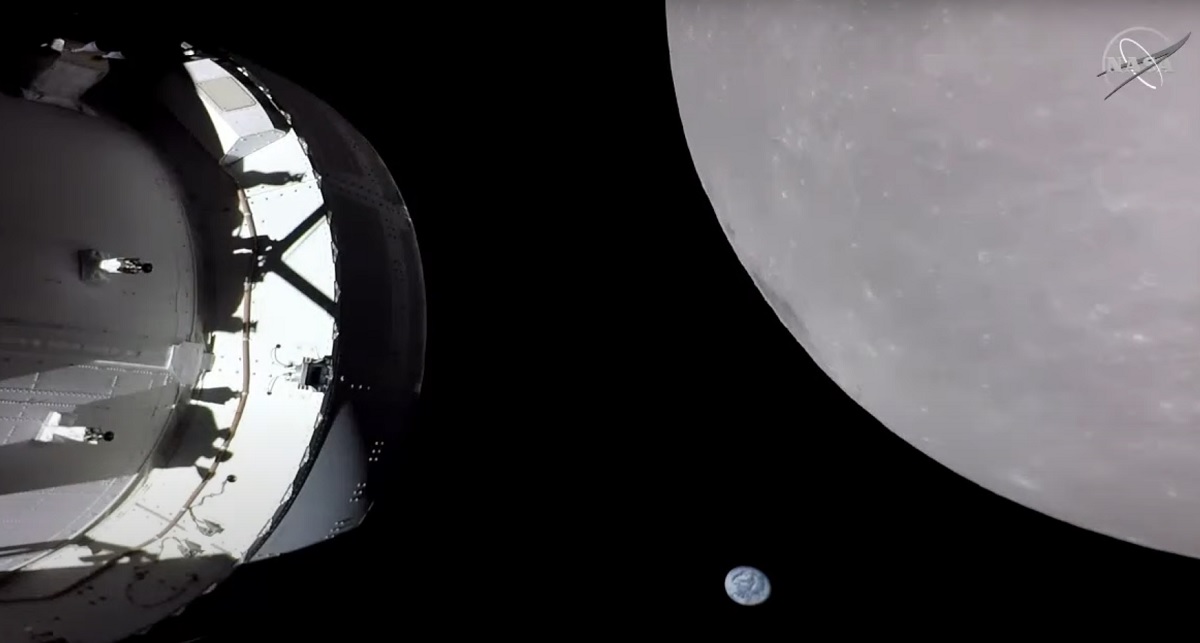
Сегодня (21 ноября) космический корабль Орион запустил свои двигатели вблизи Луны, успешно завершив маневр без связи с Землей. Орион пролетел над лунной поверхностью и завершил прожиг двигателя, необходимый для продолжения своей исторической миссии. Беспилотный космический корабль Орион Artemis 1 направляется к Луне с утра среды (16 ноября), когда он стартовал на сверхтяжелой ракете-носителе NASA Space […]
Сообщение Космический корабль Орион успешно завершил облет Луны и вышел на связь с Землей появились сначала на AB-NEWS - Новости науки и техники.
#астрономия #космонавтика #artemis #orion #sls #луна #наса #lang_ru #ru #abnewsru #abnews #наукаитехника
Космический корабль Орион «превзошел» ожидания

Космический корабль «Орион» «превосходит ожидания», заявили представители НАСА. Орион должен в ближайшие годы доставить астронавтов на Луну — впервые после последней миссии «Аполлон» в 1972 году. Первый испытательный полет без экипажа на борту призван подтвердить безопасность транспортного средства. «Сегодня мы встретились, чтобы оценить характеристики космического корабля «Орион»… он превосходит все ожидания», — сказал Майк Сарафин, […]
Сообщение Космический корабль Орион «превзошел» ожидания появились сначала на AB-NEWS - Новости науки и техники.
#астрономия #космонавтика #artemis #orion #sls #луна #наса #lang_ru #ru #abnewsru #abnews #наукаитехника
Миссия LightSail 2 завершилась после 3-летней демонстрации солнечного паруса

После более чем трех лет полета вокруг Земли миссия LightSail 2 подошла к концу после входа в атмосферу Земли. Спутник был важной технической демонстрацией идеи солнечного паруса, которая в конечном итоге могла бы доставить космический корабль к другим звездам. LightSail 2 был запущен на борту ракеты SpaceX Falcon Heavy в июне 2019 года и вышел […]
Сообщение Миссия LightSail 2 завершилась после 3-летней демонстрации солнечного паруса появились сначала на AB-NEWS - Новости науки и техники.
#астрономия #космонавтика #artemis #sls #spacex #астероиды #lang_ru #ru #abnewsru #abnews #наукаитехника
НАСА успешно запустило миссию Artemis 1 Moon
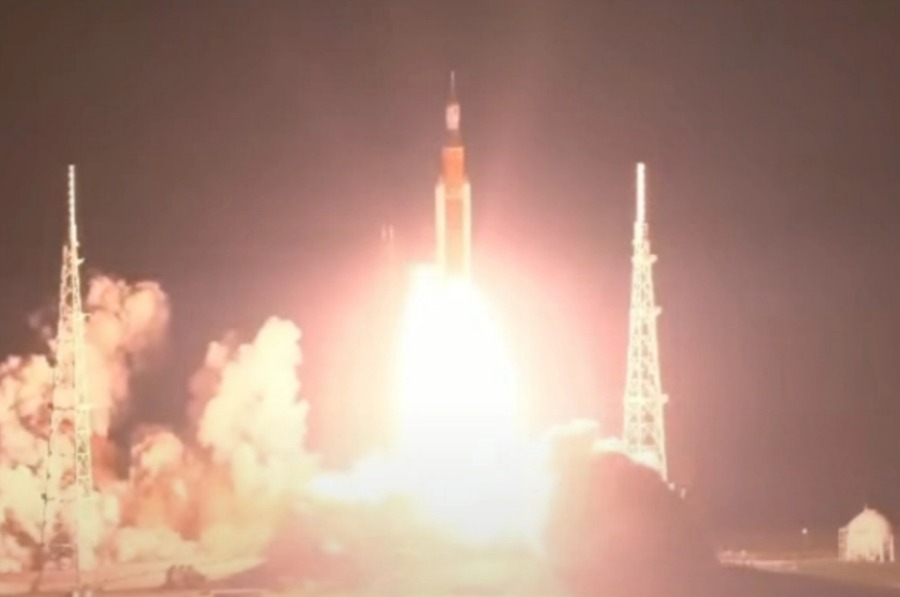
После двух неудачных попыток НАСА успешно запустило ракету-носитель SLS и космический корабль Orion. Ракета SLS стартовала в среду, 16 ноября 2020 года, в 06:48 UTC (09:48 МСК) из Космического центра Кеннеди во Флориде. К 06:57 UTC НАСА объявило, что ракета SLS достигла отключения основного двигателя на временной шкале миссии. Двигатели RS-25 отключились, и основная ступень […]
Сообщение НАСА успешно запустило миссию Artemis 1 Moon появились сначала на AB-NEWS - Новости науки и техники.
#космонавтика #artemis #sls #луна #марс #наса #lang_ru #ru #abnewsru #abnews #наукаитехника
